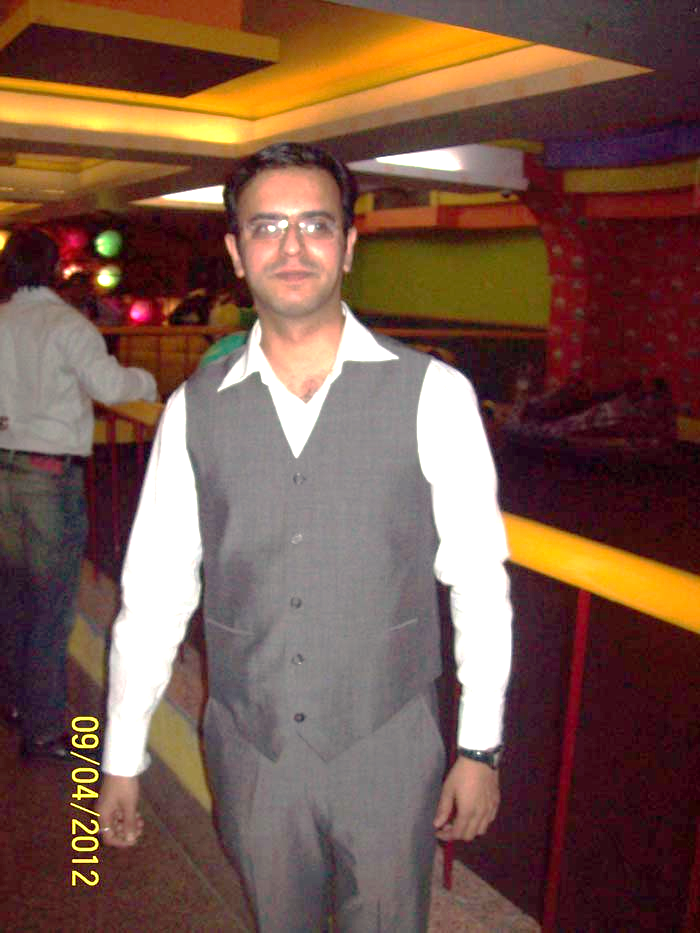Legends of Gaya: A Sacred Tapestry of Origins and Rituals
The article begins by recounting the myth of Gayasura, an asura whose boon of invincibility led him to menace the cosmos until Lord Vishnu stamped him into the earth, transforming him into the sacred site of Gaya.
It then highlights the prominence of the Vishnupad Temple—built around Vishnu’s footprint—and explains the ritual of pind dāna performed on Gaya’s ghats to liberate ancestral souls.
This summary also outlines the importance of Pitru Paksha, key pilgrimage spots like Pretshila Hill, mela (festival) dates, daily timings, and practical guidance for devotees seeking to perform these ancestral rites in Gaya.
The Legend of Gayasura: Where a Demon Became a Hill and Vishnu’s Footprint Endures
The legend of Gayasur survives in countless variations; below is one such telling:
According to Puranic lore, a demon named Gayasura undertook intense penance and received a boon from Lord Brahma granting him invulnerability so long as he offered charity.
However, he hoarded all wealth and refused to provide alms, terrorizing the region now called Gaya.
To restore cosmic balance, Lord Vishnu prevailed upon Gayasura thrice to grant charity; when he still refused, Vishnu subdued him, his body transforming into a hillock while the imprint of Vishnu’s foot remained upon his chest.
Vishnupad Temple and Sacred Footprint
The precise spot where Lord Vishnu’s footprint pressed into Gayasura’s form became sanctified and is enshrined within the Vishnupad Temple in Gaya.
A stone bearing this footprint is worshipped as “Vishnupada,” marking one of the holiest tirthas in Hinduism and symbolizing Vishnu’s role as preserver and protector.
Establishment of Gaya as Ancestral Tirtha
Following the subjugation of Gayasura, sage Shringi conducted shraddha rites for his ancestors at this site, witnessing miraculous signs of their liberation.
Ancient scriptures such as the Garuda Purana, Vishnu Purana, and Vayu Purana thereafter extol Gaya as the preeminent place for performing pind daan, articulated in the Sanskrit verse “Gayayam Pinddanachcha Putrena Putrata” — that by offering pinda at Gaya, a son fulfils his true duty.
This belief guarantees moksha for departed souls, making Gaya indispensable for ancestral rituals performed along the Falgu River, within the Vishnupad Temple precincts, and under the Akshayvat tree.
Other Fascinating Layers of Gaya’s Mythic Tapestry
- Mangla Gauri Temple is revered as one of the 51 Shakti Peethas, marking the spot where Sati’s womb is believed to have fallen during Shiva’s sorrowful tandava; pilgrims flock here seeking blessings for fertility and familial harmony.
- The Falgu River that winds past Gaya is said to have been cursed by Yudhishthira for perceived deceit during the Mahabharata, so it flows only in the monsoon; throughout the dry season, its waters vanish underground and reappear only when devotees dig into the riverbed.
- Along the Falgu’s banks lie several sacred ghats—Dev Ghat, Pitamaheshwar Ghat, Punpun Ghat, Pretseela Ghat—each steeped in legend, where gods and sages, including Lord Shiva in penance, once sanctified the spots for performing pind-daan and other ancestral rites.
Detailed Legends of Gaya’s Ghats
Dev Ghat
Dev Ghat is the principal riverside shrine on the banks of the Falgu River where pind dān is offered daily for ancestors.
Pilgrims believe their forebears descend here to accept offerings, and the ritual is conducted by the hereditary Gayawal pandas, who trace their lineage to the original Brahmkalpit Brahman priests.
- Location: Western bank of the Falgu River, just below Vishnupad Temple
- Rituals: Tarpan and pind dān offerings every morning and evening
- Custodians: Gayawal pandas oversee ceremonies and maintain the ghat precincts
Pitamaheshwar Ghat
Pitamaheshwar Ghat centers around the Pita Maheshwar Temple, dedicated to Lord Shiva as the “Father of the World.”
A large red‐sandstone kund (pond) and nearby Sheetla Mata shrine are integral to this ghat, where pind dān and tarpan are performed year-round.
Mahashivratri sees especially large gatherings here, as devotees seek Shiva’s blessings for the peace of paternal ancestors.
- Main Shrine: Pita Maheshwar (Shiva) Temple and Sheetla Mata shrine
- Architectural Note: Red stone pond and renovated temple facades
- Festivities: Major pilgrimage spot during Mahashivratri and Pitru Paksha
Punpun Ghat
Punpun Ghat, situated on the banks of the Punpun River, is regarded as the obligatory first stop in the Gaya shraddha circuit.
Legend holds that Lord Rama performed pind dān here for King Dasharatha, so every pilgrim must first offer tarpan at Punpun before proceeding to Gaya’s Falgu ghats.
- River Confluence: Punpun meets Falgu downstream
- Traditional Role: “Gateway” to Gaya pind dān, honoring Dasharatha
- Pitru Paksha Fair: Major mela site alongside Gaya’s own festivities
Pretshila Ghat
Perched atop Pretshila Hill, Pretshila Ghat is steeped in Vayu and Garuda Purana lore.
Ancestors are said to draw their offerings from crevices in the “Preta Shila” (ghost-rock), releasing souls from ghostly bondage.
Lord Rama and Lakshmana performed shraddha here for Dasharatha, and a temple to Yama built by Ahilyabai crowns the summit.
- Sacred Rock: “Preta Shila” with Brahma’s footprint and crevices for pind dān
- Hilltop Temple: Yama (God of Death), Brahma Kund and Ramkund for ritual baths
- Access: 600+ stone steps or palanquin service for elderly pilgrims
Beyond these four, Gaya’s ghats form an interwoven tapestry of myth and ritual, each step along the Falgu’s banks echoing with stories of gods, sages, and ancestral devotion.
Legend of Pretshila Ghat
Origin and Name
Pretshila—literally “Ghost Rock”—was originally known as Preta Parvat, the Hill of Spirits.
According to the Garuda Purana, this massive rock spontaneously appeared to channel departed souls toward offerings placed in its natural crevices.
After sunset, pilgrims often report faint sounds or shadows as ancestors pass through these fissures on their journey to the spirit world.
King Dasharatha’s Shraddh
Legend holds that Lord Rama, with Lakshmana, performed the pind-dān for his father, King Dasharatha, at the base of Pretshila.
The site gained further sanctity when two parallel lines—said to be Brahma’s thumbprints—became visible on the rock, marking where Rama conducted the rites.
Temple of Yama and Sacred Tanks
Crowning the hill is a temple dedicated to Yama, the God of Death, believed to have been built by Ahilyabai in 1787. At Pretshila’s foot lie:
- Brahma Kund, where pilgrims ritually bathe before ancestral offerings
- Ramkund, the pond where Rama is said to have bathed prior to performing shraddha
Liberation of Departed Souls
Shraddha manuals emphasize Pretshila as the pivotal point where “preta” (ghosts) are released from their earthly bondage.
After pind-dān in the rock’s grooves, souls ascend to Preta Loka and onward toward moksha, making Pretshila an indispensable stop for anyone seeking peace for their ancestors.
Did You Know? Pilgrims can climb Pretshila’s 600-odd steps or hire a palki (sedan chair) service if they’re unable to make the ascent on foot. This journey uphill symbolizes the soul’s own passage from the mortal plane to liberation.
Recommended ghat for ancestral pind-dān for general public
Dev Ghat on the western bank of the Falgu River, right below Vishnupad Temple, is the principal and most auspicious spot for ancestral pind-dān.
Here’s why it’s ideal for your parents’ shraddha:
- Central Tīrtha: It’s the main pilgrimage locus for pind-dān in Gaya, believed to directly invoke the ancestors’ descent to accept offerings.
- Expert Priests: The hereditary Gayawal pandas, custodians of Dev Ghat, trace their lineage to the original Brahmkalpit priests and ensure every rite—from tarpan to pinda offerings—is conducted with strict scriptural adherence.
- Timeless Sanctity: Daily rituals at dawn and dusk maintain the ghat’s continuous spiritual potency, especially significant after completing a one-year shraddha.
Note: Legend holds that Lord Rama performed pind dān at Punpun Ghat for King Dasharatha, so every pilgrim must first offer tarpan at Punpun before proceeding to Gaya’s Falgu ghats.
Next Steps
A. Book a Gayawal panda well in advance for your chosen date (ideally during the next Pitru Paksha).
How to Book a Gayawal Panda for Your Pind‐Dān at Dev Ghat
1. Government Portal (Preferred) Visit the official Pind Daan Gaya site: http://pinddaangaya.bihar.gov.in
Click on “Panda Ji List” to view all Gayawal pandas and their daily service fees.
Note your chosen panda’s code and call the helpline at 9266628168 or 06312222500 to: Confirm availability
Reserve your desired date Provide the following details when booking:
Names of your parents
Ceremony date and time slot
Number of priests needed
Any special rites or samagri requirements
2. Mobile App
- Download the “Pitrapaksh Mela” app (Android/iOS) via Google Play or the App Store.
- Open the “Panda Ji List” section, select your panda, choose a date, and tap “Book”.
- You’ll receive confirmation via SMS or in‐app notification.
3. On‐Site Booking at Dev Ghat
On arrival, locate the Ritual Booking Office beside the Vishnupad Temple complex.
Fill out a simple form with your details (same as above).
Pay the regulated fee at the counter (cash or UPI).
Collect your booking receipt and entry slip for the ghat ceremony.
4. Advance‐Reservation Guidelines
- For Pitru Paksha (mid-September): Book 45–60 days in advance.
- For off-peak dates: 2–4 weeks’ notice generally suffices.
5. Fees & Payment Modes
- Government-regulated Gayawal pandas: ₹2,000–3,500 per priest per day, payable on booking (cash or UPI).
- Private certified pandas (e.g., via pinddaanwale.com): ₹4,000–10,000, often including full pooja samagri and on-site guidance.
6. Post‐Booking Checklist
- Reconfirm panda name and time slot by SMS or call 7 days before the ceremony.
- Prepare your ritual kit (rice balls, black sesame seeds, ghee) or order a pooja-samagri package through the portal/app.
Arrive at Dev Ghat at least 30 minutes before your slot, with your booking receipt in hand.
B. Arrange your ritual kit (pind-dan set, rice balls, black sesame seeds, ghee).
Arrive early to perform tarpan at Punpun Ghat and then the pinda offerings at Dev Ghat under the guidance of your panda.
More you might explore
- Pitamaheshwar Ghat for an additional Shiva-blessed shraddha.
- Mangla Gauri Temple visit for blessings on fertility and familial harmony.
- Timing your visit with the Falgu’s monsoon resurgence for extra symbolic resonance.
When performing pind daan for my parents in Gaya, is it advisable to offer monetary donations on behalf of other deceased relatives at the same time?
What You Might Consider:
- Consult your family priest on lineage-specific customs for combined offerings.
- Clarify with the pandit whether dakshina (priest’s fee) and donations to other ancestors need separate rites or dates.
- Review Pitrupaksha schedules—some days are reserved for specific ancestors, which may influence whether you combine rituals.
Legend of the Mangla Gauri Temple at GayaHistorical Background
Mangla Gauri Temple crowns the Mangalagauri Hill in Gaya and is revered as one of the 51 Maha Shakti Peethas, where fragments of Goddess Sati’s body fell during Lord Shiva’s cosmic dance of grief.
The site is mentioned in the Padma, Vayu, Agni and Markandeya Puranas and the present shrine dates back to around the 15th century CE.
The Shakti Peetha Legend
- King Daksha’s Yajña and Sati’s Self-Immolation
Daksha Prajāpati, Sati’s father, insulted her husband Lord Shiva by excluding him from a grand sacrifice. Unable to bear the dishonor, Sati immolated herself in the sacrificial fire, precipitating Shiva’s wrathful Tandava (dance of destruction). - Vishnu’s Intervention and the Fall of Body Parts
To calm Shiva and save the cosmos, Lord Vishnu wielded his Sudarshana Chakra to dismember Sati’s corpse. As each part fell, sacred shrines arose at those spots across the subcontinent, known today as Shakti Peethas. - The Breast Falls at Gaya (Mangla Gauri)
At Gaya’s Mangalagauri Hill, it is believed Sati’s breast (mangala) descended. There Shiva’s power-spot emerged as Mangla Gauri—“the Auspicious Mother”—where devotees worship for marital harmony, fertility and blessing in progeny.
Significance and Worship
It’s one of the 51 Maha Shakti Peethas, marking the spot where Goddess Sati’s breast fell—symbolizing nourishment, fertility and marital bliss.
- Newly married couples visit to invoke the Devi’s grace for emotional intimacy, progeny, and a lifetime of mutual happiness.
- Pilgrims offer red sindoor (vermillion) and light oil lamps to invoke Mangla Gauri’s benevolence.
- The temple complex also houses shrines to Kali, Ganesha, Hanuman and Shiva, underscoring its pan-Hindu appeal.
Every Tuesday in monsoon, women offer 16 varieties of bangles, seven fruits and five sweets to the Devi, praying for prosperity in their homes and success for their husbands.
The temple keeps an “Akhand Deep” (eternal lamp) burning round-the-clock; mere darshan of this flame is believed to bestow the highest blessings
Location: Atop Mangalagauri Hill by the Falgu River, about 5 km from Gaya Railway Station and 9 km from Gaya Airport.
Timings: 05:00–13:00 and 15:00–22:00 daily.
Dress and Conduct: Modest attire; remove footwear before entering; maintain silence during puja.
Best Timing for Monsoon-Resurgence Visit
The Falgu River runs visibly only during the monsoon months (June–September), disappearing into an underground stream outside this window.
After heavy pre-monsoon showers in mid-July, the river typically swells by 10–12 feet, transforming the ghats into a flowing tirtha once again.
For the most dramatic, water-filled setting at Dev Ghat, plan your pind-dān between late July and early August.
If you want to combine the ritual with Pitru Paksha (mid-September), the river still retains a steady flow then, lending extra symbolic resonance to your shraddha rites.
- Late July–early August: Peak monsoon inundates Falgu up to 10–12 feet, ensuring a full riverbed for your offerings.
- Early–mid-September (Pitru Paksha): Monsoon recedes but Falgu remains visibly flowing, perfect for ancestral ceremonies.
- Post-October: Riverbed dries out again, so symbolic water presence is lost.
Additional Tips
- Aim for a morning visit (around 6 AM) when tarpan and pinda-dān begin under soft dawn light.
- Check local rainfall forecasts in July to lock in the peak flow period.
- Coordinate with your Gayawal panda 1–2 months ahead, especially if you’re targeting Pitru Paksha dates.
Useful links:
http://pinddaangaya.bihar.gov.in/
https://pinddaanwale.com/reservations/
https://prayagpandits.com/pretshila-hill-gaya-bihar/
https://www.tirthayatra.org/pretshila-gaya/
https://tourism.bihar.gov.in/en/destinations/gaya/pretshila
https://www.mahatarpan.com/post/gayasur-a-deamon-s-story-behind-the-name-of-gaya
https://sudarsanam.sampradayamanjari.org/qa/shobhakrit-vaikaasi-q43vai23009/https://pinddaan.holyvoyages.com/pind-daan-destination/varanasi/why-asthi-visarjan-or-ashes-immersion-in-ganga-varanasi.aspx
*Share your experiences and stories in the comments below. Let’s inspire one another and build a supportive community together.
Author Bio
Rajesh Pathak is a bilingual spiritual writer and ritual documentarian who creates accessible guides for meaningful family worship.
He specializes in translating sacred ceremonies and crafting practical tips that honour tradition and foster harmony. His expertise in technical writing and cultural studies ensures each ritual is presented with authenticity and clarity.



